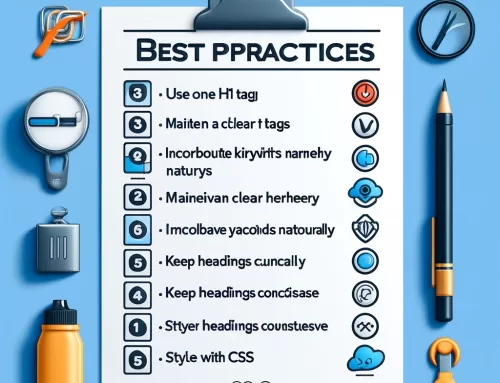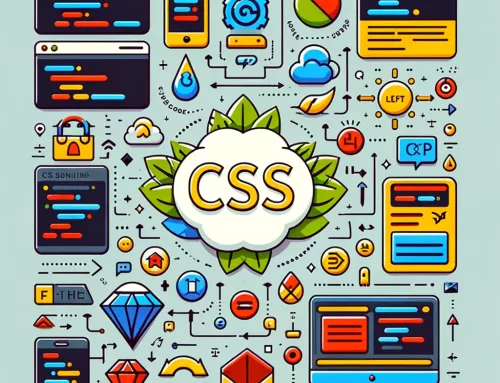What email address you use, matters!
What email address do you use as the sender when you send messages from your organization or brand? Like many companies, you might use a no-reply email address.
Many organizations use this type of address to dissuade customers from replying to certain emails, for example, receipts or marketing emails.
There are some major issues with this practice. If you use a no-reply email address, you might be damaging your organization’s reputation and even reducing the efficacy of your email marketing campaigns.
And you might not even realize that a no-reply address is the cause of your lackluster email marketing results.
Here is what you need to know about the consequences of using a no-reply email address for your email marketing and transactional messages, and what to do instead.
What is a no-reply email address?
A no-reply email is an address that uses the format “[email protected].”
Many businesses use this format to send marketing emails or transactional emails, such as receipts or shipping information. The goal is to prevent customers from flooding the email inbox with unnecessary responses. Responses to these addresses are either never answered or are sent back with a no-delivery notification.
From a business perspective, it might make sense to use a no reply email. You likely have a separate support email address that is monitored, so why should it matter? From the user side, there are several issues with using a no-reply address.
Why you should never use a no-reply email address
When a subscriber signs up for your email list, they are giving you permission to send them emails about your brand or organization. They are indicating that they value a relationship with you and want to hear more about what you do.
Using a no-reply email blocks two-way communication, which limits your relationship, and can actually hurt your email marketing efforts. Here are a few reasons why you should never use a no-reply email address.
1. A no-reply email address can harm your email delivery rate
You spend hours designing the perfect email. You write and rewrite copy, you agonize over the perfect email subject line, and you obsess over your CTA. But if you are using a no-reply email address, your message might never even hit your subscribers’ inbox.
Internet service providers (think Comcast or AT&T) and email providers (think Gmail) use filters to prevent spam messages from making it into their client’s inboxes. Using a no-reply email can result in your email being caught in a spam filter and blocks your email from being delivered at all.
Not every no-reply email address will get caught by spam filters, but it can definitely happen and you might have no idea why your emails aren’t getting delivered.
2. Many users cannot add no-reply addresses to their address book
In addition, most email service providers do not allow users to add no-reply email addresses to their address book. Not a big deal, you don’t want them to email you back at that address anyway, right?
But, there is another issue. When a user adds an email address to their address book, it prevents that email from getting marked as spam by filters. If you use a no-reply email, receivers have no way to prevent your email from being caught by their spam filter. All that time you spend crafting the perfect email? Wasted.
3. Using a no-reply email can frustrate your audience
Many times, customers don’t see or just ignore the no-reply address. Most people don’t even check the email address when responding, they just hit ‘reply.’ When you don’t answer, they think you are ignoring them. Or, worse, they get a “cannot deliver” notification, which makes them think your first email was spam.
You contacted them from that email address, and most users do not understand why they can’t reply. In their mind, every email address has someone the other end.
Think about it from the user’s perspective:
You receive an email from your favorite company. You have a brilliant thought, so you hit reply. Maybe you want to ask them a question or offer feedback about their newest product.
Two seconds later you get a “cannot deliver” notification. Or worse, an impersonal email stating that the email box isn’t monitored.
You are annoyed, but you head to their website and find their contact email address. You send the email, but you are a little put off by the extra step. Why don’t they want to hear from you? Maybe they don’t really value your thoughts.
Don’t create a pain point just for the sake of a cleaner inbox.
Lastly, don’t forget to keep in mind what you are actually saying to users.
4. You might miss out on valuable communication
When a customer reply to your emails, it could be for a multitude of reasons. They might have an issue with downloading the ebook they just purchased. They might be struggling to complete a purchase, or just have a simple question. They might have a suggestion for an added feature or be a journalist who wants to feature your company in an article. You will never know!
When you cut off communication by using a no-reply email address, you won’t have access to this communication. You might miss uncovering where many of your customers are getting lost in your funnel. You won’t be there to answer simple questions (with a simple email reply) that could increase conversion rates. You could miss out on any number of opportunities.
When customers invite you into their inbox, they expect the communication to be two-sided. Using a no-reply email is impersonal and provides a poor user experience.
5. Using a no-reply email address might not be GDPR-compliant
GDPR (Global Data Protection Regulation) is a set of European Union laws that outlines how companies use the data they gather about customers and internet users. One of the rules states customers must be able to request information about the data collected about them.
By using a no-reply address, you are preventing customers from communicating with you. While there is no provision specifically outlawing no-reply email addresses, there are cases where it could impact your GDPR compliance. In addition, failure to adhere to GDPR could result in fines.
6. Using a no-reply address increases your chances of being marked as spam
In addition to being caught by spam filters, no-reply addresses are more likely to get marked by spam by users themselves. For example, say a recipient tries to reply to your email. They get a notification that their email cannot be delivered. They think your email was spam, so they mark it as spam with their email provider. Now every email you get from them will go into their spam folder, never to see the light of day.
Getting marked as spam can have long-term consequences for your email marketing, too. If your emails get marked as spam by multiple users, your email provider might get blacklisted, which prevents any emails from any user from being delivered.
All these issues just for the sake of preventing a few replies. Doesn’t seem worth it, does it? Luckily, there is another way.
What to use instead of a no-reply email address
Now that you understand all the different issues that can arise when using a no-reply email address to send emails to your list, what should you do instead? Below, we will walk you through all the steps, including how to manage the replies you receive.
1. Swap out that no-reply email for a real email address
The first step is to swap out your no-reply email address with an email address specifically for your marketing campaigns or transactional emails. This will ensure replies do not get mixed up with, say, support requests.
Here are a few ideas to consider using instead of a no-reply address:
- [email protected]
- [email protected]
- [email protected] (This looks personal and doesn’t have to be managed by the owner.)
- [email protected]
You might be overwhelmed at the thought of allowing people to respond to your marketing emails, particularly if your resources are limited. Luckily, there are ways to prevent your already stretched team from getting buried in a mountain of responses
2. Use tools and rules to separate emails for responses
Ideally, you would have someone monitor the responses inbox and reply to emails. However, this might not always be possible. (This was likely why you were using a no-reply email to begin with, right?)
Once you have a separate email box for responses, you can use filters and rules to direct emails to the appropriate inboxes. For example, some email clients allow you to create rules to filter emails with specific words in the title to another email box. (Here is how to do it in Gmail.)
You could also use an autoresponder. This will show your audience you are interested in communicating with them and will get back to them as soon as possible.
Or, you could set the autoresponder to reply with a list of resources and a support phone number. You could also you could direct urgent requests to another email address.
The solution for fielding emails will depend upon whether people are responding to sales emails or, say, transactional emails. You might direct responses to email marketing messages to your sales team and have replies to transactional emails sent to your support team. (I would suggest setting up separate email addresses to make this easier!)
3. Use customer questions to inspire content and resources
Once you start getting responses, you might notice that many replies contain requests for similar information.
This represents an opportunity to educate your customers. For example, you might:
- Add often asked questions to your FAQ page
- Write a blog post about a topic that seems to confuse your audience
- Create a long-form resource to educate customers and prospective customers
- Record a video with step-by-step instructions for completing a task that most customers struggle with.
If several customers have similar questions, it is likely many other people who aren’t asking have the same issue. By addressing their questions, your company can become a resource instead of just another company vying for attention in their inbox.
4. Be proactive with providing resources
The most effective way to avoid being flooded with email responses is to provide information before customers know they need help. For example, after customers make a purchase, direct them to an FAQ page, or include a link to your help page in your email communications.
As you create content around the most often asked questions, make sure to include links to those resources in emails. Being proactive will reduce the number of emails replied while still providing your customers with the information they need.
Wrapping up
Using a no-reply email address can cause a multitude of issues for your company or organization. It offers a terrible user experience, can reduce the efficacy of your email marketing campaigns, and can prevent you from uncovering content opportunities.
Instead, use an address email address your audience can reply to and set up a procedure to manage the replies. You might just uncover some valuable information in the process.




